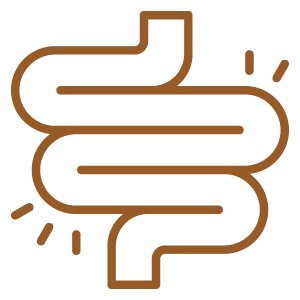Gladstar, R. (2008). Rosemary Gladstar’s herbal recipes for vibrant health. Adams, MA: Storey Publishing.
Gupta, R.K., Gupta, D., Bhaskar, D. J., Yadav, A., Obaid, K., & Mishra, S. (2014). Preliminary antiplaque efficacy of aloe vera mouthwash on 4 day plaque re-growth model: Randomized control trial. Ethiopian Journal of Health Sciences, 24(2), 139-144. https://doi.org/10.4314/ejhs.v24i2.6
Heinrich, M., Barnes, J., Prieto-Garcia, J., Gibbons, S., & Williamson, E. M. (Eds.). (2023). Fundamentals of pharmacognosy and phytotherapy (4th ed.). Elsevier.
International Aloe Science Council. (2009). Aloe scientific primer. https://www.iasc.org/Files/Downloads/IASC_Aloe_vera_A_Scientific_Primer.pdf
Langmead, L., Feakins, R. M., Goldthorpe, S., Holt, H., Tsironi, E., De Silva, A., Jewell, D. P., & Rampton, D. S. (2004). Randomized, double-blind, placebo-controlled trial of oral aloe vera gel for active ulcerative colitis. Alimentary Pharmacology & Therapeutics, 19(7), 739-747. https://doi.org/10.1111/j.1365-2036.2004.01902.x
McIntyre, A. (2019). The complete herbal tutor. Aeon.
Molazem, Z., Mohseni, F., Younesi, M., & Keshavarzi, S. (2015). Aloe vera gel and cesarean wound healing: A randomized controlled clinical trial. Global Journal of Health Science, 7(1), 203-209. https://doi.org/10.5539/gjhs.v7n1p203
de Oliveira, S. M. A., Torres, T. C., da Silva Pereira, S. L., de Lima Mota, O. M., & Carlos, M. X. (2008). Effect of a dentifrice containing Aloe vera on plaque and gingivitis control: A double-blind clinical study in humans. Journal of Applied Oral Science, 16(4), 293–296. https://doi.org/10.1590/S1678-77572008000400012
Panahi, Y., Sharif, M. R., Sharif, A., Beiraghdar, F., Zahiri, Z., Amirchoopani, G., Tahmasbpour Marzony, E., & Sahebkar, A. (2012). A randomized comparative trial on the therapeutic efficacy of topical Aloe vera and Calendula officinalis on diaper dermatitis in children. Scientific World Journal, 2012, Article 810234. https://doi.org/10.1100/2012/810234
Surjushe, A., Vasani, R., & Saple, D. G. (2008). Aloe vera: A short review. Indian Journal of Dermatology, 53(4), 163–166. https://doi.org/10.4103/0019-5154.44785
Syed, T.A., Ahmad, S.A., Holt, A.H., Ahmad, S.A., Ahmad, S.H., & Afzal, M. (1996). Management of psoriasis with aloe vera extract in a hydrophilic cream: A placebo-controlled, double-blind study. Tropical Medicine & International Health, 1(4), 505-509. https://doi.org/10.1046/j.1365-3156.1996.d01-91.x
Ulbricht, C., Armstrong, J., Basch, E., Basch, S., Bent, S., Dacey, C., Dalton, S., Foppa, I., Giese, N., Hammerness, P., Kirkwood, C., Sollars, D., Tanguay-Colucci, S., & Weissner, W. (2007). An evidence-based systematic review of Aloe vera by the natural standard research collaboration. Journal of Herbal Pharmacotherapy, 7(3-4), 279-323. https://doi.org/10.1080/15228940802153339









